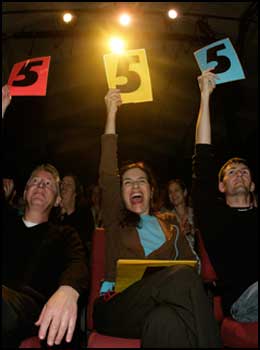Online Display Space Heating Up
Posted in: UncategorizedMicrosoft wasn’t willing to pay a premium for Yahoo, a company that would have helped them compete against Google, but the Redmond software titan still intends to move aggressively into online advertising.
BusinessWeek has the story :
It may be impossible to catch Google in search advertising. The company dominates the market, taking in 77% of the revenues from those little text ads that show up alongside the results for Internet search queries. Microsoft, after years of trying, is at 5% of U.S. search revenue, according to search marketing firm Efficient Frontier.
But Microsoft has a fighting chance on several other fronts. Perhaps most important is display advertising, the colorful banner and video ads that run at the top or along the side of Web pages. Microsoft is among the leaders in the fragmented field, while Google is a bit player. Although the display market is smaller than search, it’s expected to grow faster over the next few years because of a surge in video ads. Market research firm IDC (IDC) figures that by 2012 the display market will double, to $15.1 billion; revenue from search will reach $17.6 billion.
“We’re very persistent,” said Ballmer at a wireless conference last year, “If we don’t get it right, we’ll keep coming and coming and coming.”
Engagement Mapping is one of the better tools in Microsoft’s shed.
The technology anonymously tracks cookies, those digital footprints left on PCs by Web sites, to see if a consumer saw display or video ads within a month of making that ultimate click. Then it places values on each related online ad, weighting things like videos more heavily, since they’re likely to have more impact.
Ben Winkler is a believer. He’s director of interactive media at the Ingenuity Media Group, part of ad firm The Martin Agency. He’s been testing the Microsoft technology for one of his clients, wireless provider Alltel. The technology, he says, shows that display ads have an impact that had never been clear before. As a result, he plans to advise clients to spend a greater share of their ad dollars on display vs. search ads.




